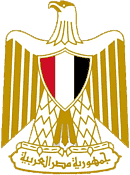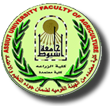A field experiment was carried out during the two consecutive winter seasons of 2018/2019 and 2019/2020 in the Experimental Farm, Faculty of Agriculture and Natural Resources, Aswan University, Egypt. The objective of study was to evaluate the response of five garlic genotypes, (Egaseed1, Sids40, Clone 3, Clone 4 and Clone 5) to the foliar application of chitosan (0 , 1.5 , 2 and 2.5 cm/L).
The results showed that the highest leave number was obtained by Clone 4 and Clone 5 in both seasons respectively. Whereas the highest leave number was obtained by control and 1.5 cm/L respectively. Through highest plant was Clone 3, Clone 5 respectively. While the highest plants were obtained by 1.5 cm/L. The highest fresh and cured yield ton / fed were obtained by Clone 4 and Clone 5 in both seasons respectively. While the highest fresh and cured yield ton / fed were obtained by 2 cm/L and control respectively. Meanwhile the highest Garlic bulb diameter after curing was obtained by Clone 5 and sids40 in both seasons respectively. While the highest Garlic bulb diameter after curing was obtained by 2cm/L. Meantime highest Average clove weight after curing was obtained by Clone 3 and sids40 respectively. While highest Average clove weight after curing was obtained by 2 cm/L and control respectively. Meanwhile highest T.S.S after curing was Egaseed1, Clone 4 respectively. While the highest T.S.S after curing was obtained by 2.5 cm/L respectively. Meanwhile lowest Weight loss percentage after curing was sids40, Clone 5 respectively. While the lowest Weight loss percentage after curing was obtained by 2cm/L and 2.5 cm/L respectively.
Research Abstract
Research Department
Research File
Research Journal
Aswan University Journal of Science and Technology
Research Member
Research Vol
Volume 3, issue 2, December 2023
Research Website
https://journals.aswu.edu.eg/stjournal
Research Year
2023
Research Pages
67-90
 Do you have any questions?
Do you have any questions? 
